
All categories
Featured selections
Trade Assurance
Buyer Central
Help Center
Get the app
Become a supplier

(1006 products available)
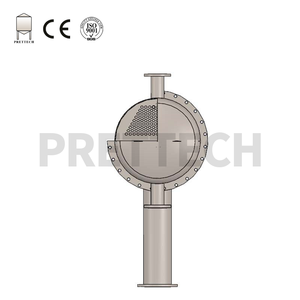


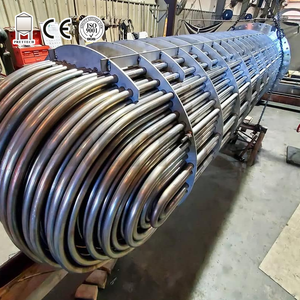
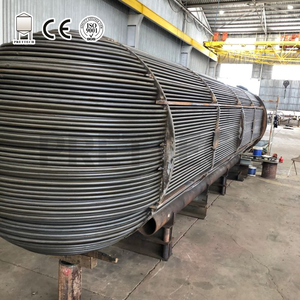










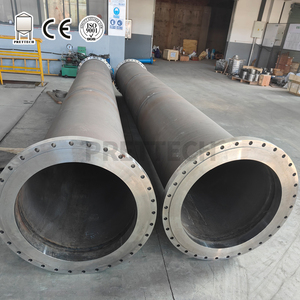
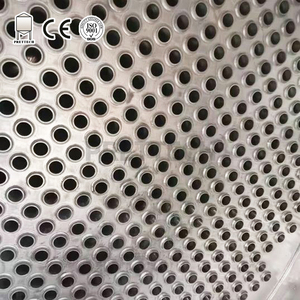


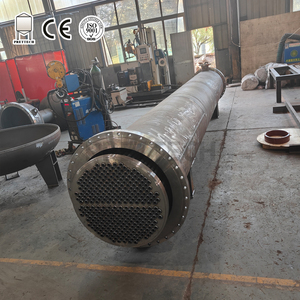

fluoroplastic heat exchanger are essential components in various industrial applications, primarily designed for efficient heat transfer between two or more fluids. These devices serve a critical role in managing temperature regulation in systems, ensuring optimal performance and energy efficiency. fluoroplastic heat exchanger are commonly used in industries such as chemical processing, power generation, HVAC, and refrigeration, where controlling temperature is vital for operational success. The intricate design and engineering of fluoroplastic heat exchanger enable them to facilitate effective heat exchange, contributing to the overall sustainability and cost-effectiveness of industrial processes.
There are several types of fluoroplastic heat exchanger available, each designed to meet specific requirements and applications. The most prevalent types include shell and tube heat exchangers, plate heat exchangers, and air-cooled heat exchangers. Shell and tube heat exchangers consist of a series of tubes, with one fluid flowing through the tubes and another fluid flowing around them, making them suitable for high-pressure applications. Plate heat exchangers, on the other hand, use metal plates to transfer heat between fluids, offering high efficiency and compact design ideal for limited space environments. Air-cooled heat exchangers utilize ambient air to dissipate heat, making them suitable for outdoor applications where water is scarce or unavailable. Each type of fluoroplastic heat exchanger is tailored to optimize heat transfer efficiency and accommodate specific operational demands.
The primary function of fluoroplastic heat exchanger is to facilitate the transfer of heat between two or more fluids, which can either be liquid or gas. They are designed to maximize heat transfer while minimizing energy consumption, contributing to the overall efficiency of industrial systems. Key features of fluoroplastic heat exchanger include corrosion resistance, high thermal conductivity, and compact design. Corrosion resistance ensures longevity and reliability, especially in harsh industrial environments. High thermal conductivity enhances heat transfer efficiency, while compact design allows for easy integration into existing systems without requiring extensive modifications. Additionally, fluoroplastic heat exchanger are engineered to handle varying pressure and temperature ranges, ensuring adaptability across diverse applications.
The construction of fluoroplastic heat exchanger involves a variety of materials, each selected for its specific properties that enhance performance and durability. Common materials include stainless steel, copper, aluminum, and titanium. Stainless steel is favored for its corrosion resistance and strength, making it suitable for high-pressure applications. Copper offers excellent thermal conductivity, enhancing heat transfer efficiency, while aluminum is lightweight and provides cost-effective solutions for less demanding applications. Titanium is used in environments where extreme corrosion resistance is required, such as chemical processing industries. The choice of materials directly impacts the efficiency, longevity, and cost of fluoroplastic heat exchanger, allowing manufacturers to tailor them to specific industry needs and conditions.
Effective use of fluoroplastic heat exchanger requires a thorough understanding of their operational parameters and maintenance needs. It is crucial to select the appropriate type of heat exchanger based on the specific requirements of the application, considering factors such as fluid type, temperature range, and pressure conditions. Regular maintenance, including cleaning and inspection, ensures optimal performance and prolongs the lifespan of fluoroplastic heat exchanger. Monitoring operational metrics such as temperature differentials and pressure drops can help identify potential issues before they escalate, facilitating timely interventions. Proper installation and alignment are also essential to prevent leaks and ensure efficient heat transfer. By adhering to these best practices, industries can maximize the benefits of fluoroplastic heat exchanger, enhancing system efficiency and reducing operational costs.
Selecting the appropriate fluoroplastic heat exchanger for industrial applications requires a comprehensive understanding of the specific requirements and constraints of the system. Factors such as the type of fluid, temperature ranges, pressure levels, and space availability play a crucial role in determining the most suitable fluoroplastic heat exchanger. For instance, industries requiring high-pressure operations might benefit more from shell and tube designs, while those with space constraints may prefer the compactness of plate fluoroplastic heat exchanger. Additionally, evaluating the thermal efficiency and material compatibility is essential to ensure long-term performance and reliability.
Proper installation and maintenance of fluoroplastic heat exchanger are vital to achieving optimal performance and extending the lifespan of the equipment. During installation, ensuring correct alignment and secure fittings can prevent leaks and inefficiencies in heat transfer. Regular maintenance schedules, including cleaning and inspection, help maintain the efficiency of fluoroplastic heat exchanger by preventing fouling and corrosion. Monitoring system parameters such as temperature differentials and pressure drops can indicate the need for maintenance interventions, ensuring that the fluoroplastic heat exchanger operates at peak efficiency.
With growing emphasis on sustainability, the environmental impact of fluoroplastic heat exchanger is an important consideration. Choosing materials that offer recyclability and reduced ecological footprints can enhance the sustainability of industrial operations. For example, using materials such as stainless steel or aluminum not only provides durability and efficiency but also supports recycling efforts. Furthermore, advancements in fluoroplastic heat exchanger technology aim to improve energy efficiency, thereby reducing the carbon footprint of industrial processes. Implementing eco-friendly practices in the use and maintenance of fluoroplastic heat exchanger can significantly contribute to sustainable industrial growth.
When selecting fluoroplastic heat exchanger, critical factors include fluid type, temperature and pressure requirements, thermal efficiency, and space constraints. Understanding these parameters ensures the chosen design meets the operational demands and enhances system efficiency.
Industries can improve fluoroplastic heat exchanger efficiency by implementing regular maintenance practices, such as cleaning and inspections, monitoring performance metrics, and ensuring proper installation. Utilizing advanced materials and designs can also enhance thermal efficiency.
Common challenges in maintaining fluoroplastic heat exchanger include fouling, corrosion, and leaks. These issues can lead to reduced efficiency and increased operational costs. Addressing these challenges requires regular inspections and timely maintenance interventions.
fluoroplastic heat exchanger contribute to energy conservation by optimizing heat transfer processes, reducing energy consumption, and improving overall system efficiency. Advanced designs and materials enhance their ability to conserve energy and minimize waste.
Materials play a crucial role in the performance of fluoroplastic heat exchanger by affecting thermal conductivity, corrosion resistance, and durability. Selecting the right materials ensures efficient heat transfer, longevity, and adaptability to specific industrial conditions.